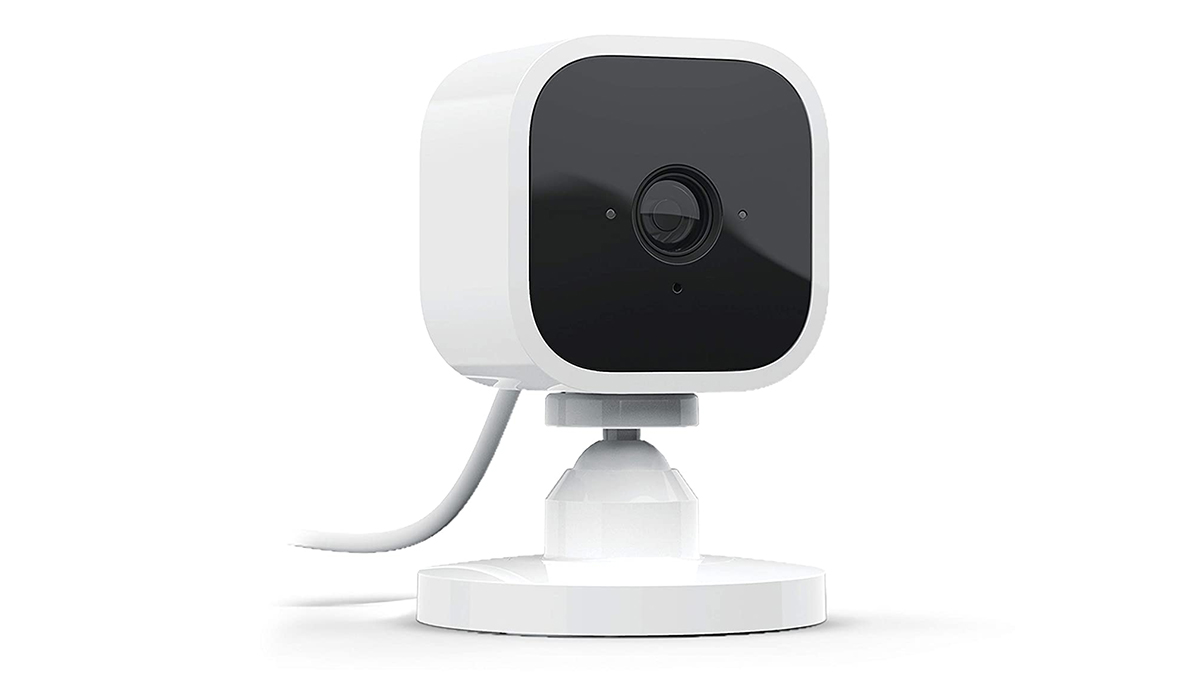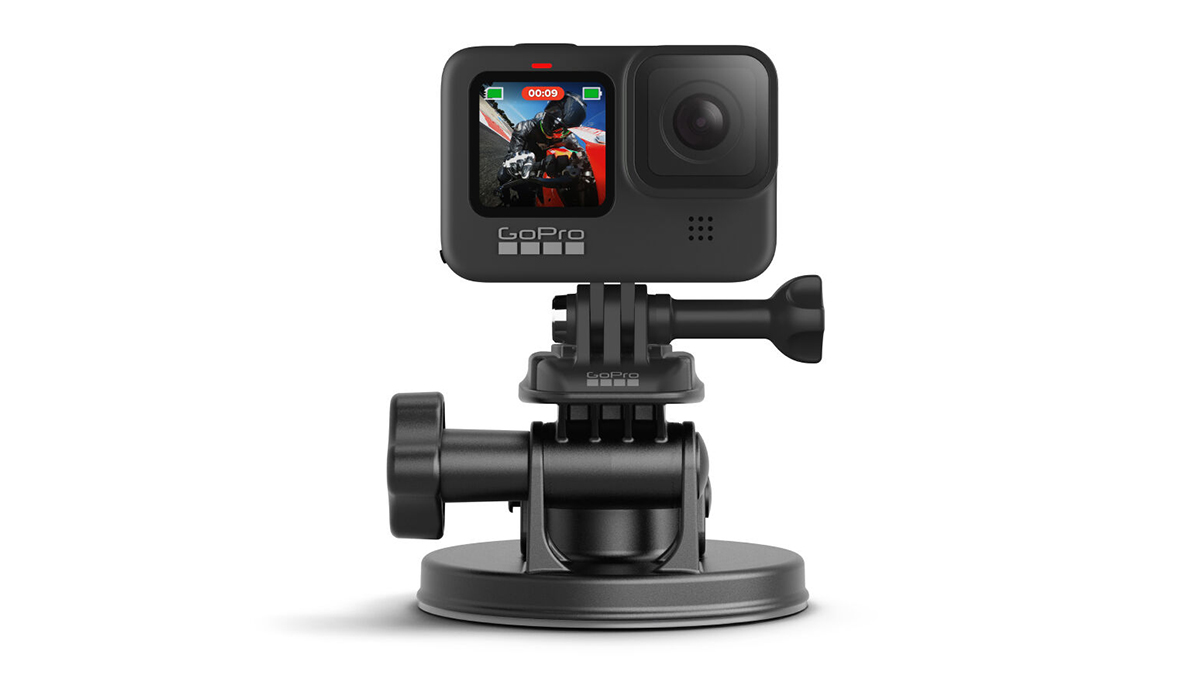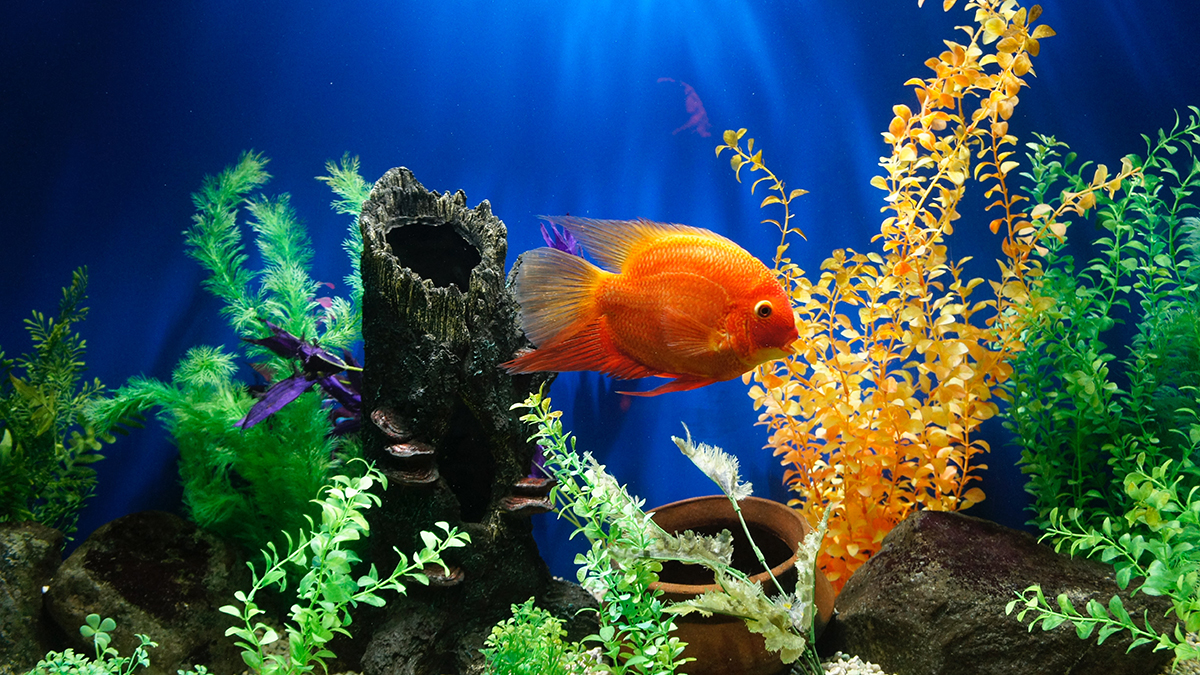How to mount an aquarium camera
Learn how to mount an aquarium camera and you'll be able to capture stunning shots of your fish family 24/7

While it may sound tricky, learning how to mount an aquarium camera is actually far easier than you think – which is good news as these nifty little devices will let you beautifully capture your pretty fish swimming happily about in the best fish tank that you lovingly purchased for them.
When it comes to the best pet cameras, the market is often heavily dominated by devices that will keep an eye on our feline friends and canine companions with far less thought given to creatures who are much smaller in size.
But, no matter whether we're the proud pet parent of a cat, dog, horse, bird, rabbit or goldfish, we all like to be able to take photos of our pets. Thankfully, while it may not seem immediately obvious how you can go about doing this in a fish tank, you'll be pleased to discover you have more options than you think.
Obviously aquariums come in all shapes and sizes, so you might have to adapt some of these ideas to suit your own setup depending on whether you have one of the best tropical fish tanks or a smaller and more compact one. But whatever kind of aquatic habitat you've put together for your fish family, our tips should help.
- Best fish tank accessories: Get some aquarium envy from your fellow fish fans
- Best fish food: the best diet for tank or pond fish
- Best fish feeder: keep your fabulous fishies well fed
Fish tank camera options

Before you worry that you're going to have to spend a fortune on a flash camera to take photos of your fish family, we'll put your mind at ease - any kind kind of camera can take fish tank photos and videos to some extent, from your smartphone to a DSLR. So you might want to think about the resources you already have at your disposal before investing in something new.
If you already have a GoPro action camera, for example, you can adapt this to snap very decent pictures of your aquarium. GoPro sells four cameras at the time of writing – from the most to the least expensive, the Hero 10 Black, the Hero 9 Black, the Hero 8 Black, and the Hero 7 Black. All will take great shots, but the more you pay the better the quality images (and video) you'll get. The GoPros are waterproof as well (down to 10 meters or 33 feet), so you have the option of putting them inside the tank as well as mounting them on the outside.
You don't want your smartphone sitting by the fish tank all day, but if you're about to upgrade and there's an old handset going spare, this might be an option. You don't need a phone with a particularly advanced camera to take fish tank shots, but as with the GoPros, usually the pricier devices will work better. Something to consider if you are taking the phone route is a macro lens: attach a lens such as the Moment Macro Lens and it can help make your close-ups that little bit sharper (just make sure you buy a lens that's compatible with the phone you're using).
Then there are the heavy-duty DSLR or bridge cameras: you'll get far more shooting options with these cameras, but you probably don't want to be mounting them permanently to your fish tank. If you want the highest-quality pictures possible, consider having a temporary set up which you can quickly install and remove again close to your fish tank rather than actually on it.
Lastly, webcams and smart home security cameras can record photos and video of your fish tank too. The image quality won't be as good as some of the other options here, but they'll come with software to let you tap into the feed from your phone whenever you like, wherever you are – you could easily set up something like the Blink Mini right next to your fish tank, for example.
Fish tank mount options

Your mounting options depend on the camera you're using. Dedicated fish tank camera mounts don't really exist, so that leaves you free to experiment: if you're a keen DIYer then you might want to consider getting your own mount and fixing constructed on the outside of your tank.
One advantage of going with a GoPro is that there are plenty of mounts and stands available, whether you want to prop the camera up outside the aquarium or actually attach it to the glass – a surfboard mount or suction cup could work very well, for example.
Suction cups can work well for phones too: any mount that can fix your phone to your car windshield can also fix it to the side of your fish tank, though you may need to get creative with the positioning to make sure the phone ends up pointing in the right direction. Shooting through glass isn't easy, as we'll get into in the section below.
Tripods are of course an option for more heavy duty digital cameras and smartphones. In this case you'd be setting up your device right next to the aquarium, most probably with the lens(es) up against the glass. The good news is there are a whole host of mini tripod options available: inexpensive, flexible tripods such as this KobraTech one can be put in many different positions.
If you take the webcam or security cam option, then the camera might already come with a bunch of mounting or bracketing options – and if not, they're usually available as accessories. Take the affordable Neos SmartCam, for example, which comes with a stand and adhesive tape so you can mount it just about anywhere.
Fish tank photo tips

You've got water, glass and all the resulting lighting complications to deal with when you're taking fish tank photos, and these all need to be taken into account. Shooting with your camera perpendicular to the glass, for example, can help reduce the chances of distortion from the fish tank itself.
On cameras where you have the option – so high-end digital cameras and some smartphones that include pro settings – you want to aim for a fast shutter speed and a shallow depth of field (a lower f-stop, if you have the setting). This helps avoid blurring from quick fish movements, while also keeping your pets in focus.
Using a flash generally isn't recommended, as you've then got even more reflections to deal with, but don't be afraid to experiment with this or any other setting. The flash can actually help freeze a moment in time, but usually only if you're using a high-end digital camera with a very fast shutter speed, rather than a phone or action cam.
You won't get any such options if you've set up a webcam or a security cam, but those devices do offer you the option of a constant feed, so it's a question of what you want to prioritize. With these cameras, getting good photos and videos is more about finding the right angle and distance before capturing anything.
Remember that there's no rush to get everything perfect first time – your fish aren't going anywhere – so try several different setups to see what works best. That also means experimenting with natural light – try taking photos using your camera at different times of the day, and from different sides of the aquarium if you can – you'll soon be able to get a feel for what works and what doesn't in terms of positioning and lighting.
PetsRadar Newsletter
Get the best advice, tips and top tech for your beloved Pets
